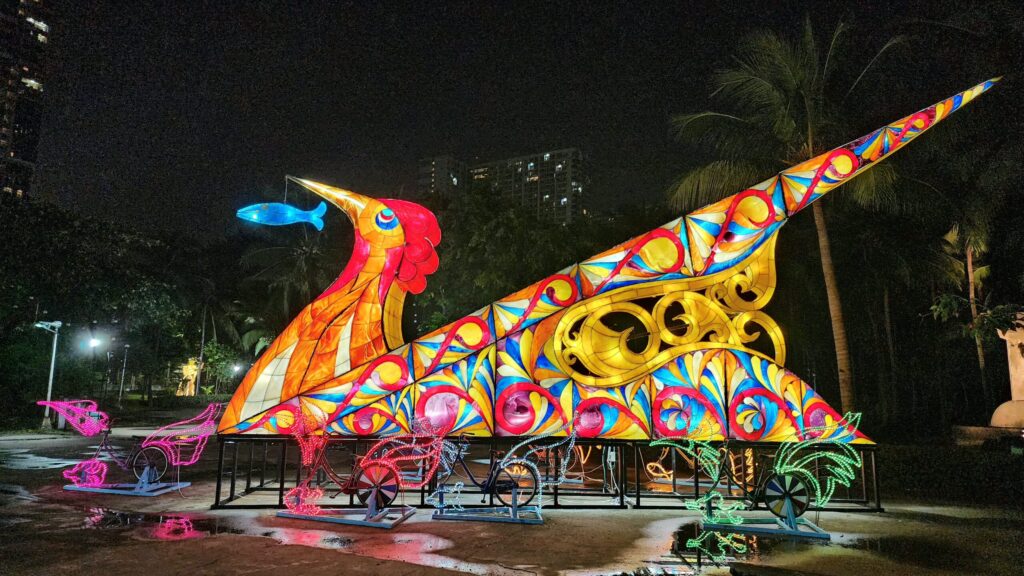In late September 2019, the Cultural Center of the Philippines mounted the son et lumiere titled “Sinag: Festival of Radiance,” accompanied by a video projected on the façade of its iconic Brutalist Main Building, dancing fountain, performances and installations, as part of the celebration of the 50th anniversary of the establishment of one of the Philippines’ revered cultural institutions.
The light show was staged again in the following years with different themes even during the imposed lockdowns in the first years of the coronavirus pandemic in 2020 and 2021, serving as beacon of hope during one of the most challenging times for the arts and culture sector.
The “Sinag” light-and-sound show continued to be mounted this year, fast becoming a tradition for CCP, as it commemorated its 54th founding anniversary and signaled the sector’s embarking on the road to recovery. It also recognized the sector’s perseverance and determination to continue creating and healing with its theme, “Tuloy Ang Palabas”(The Show Continues).”
This year, the Main Building has remained dark and silent as it closed down in January for a three-year rehabilitation and renovation, but it came alive again from 28 September to 1 October for “Sinag 2023: Tuloy Ang Palabas.”
A short video was projected on the façade, showing snippets of productions, projects and performances in the past nine months, all held in different venues outside the Main Building.
The main part was a spectacle of colors and moving patterns, conceptualized by CCP light designers Camille Balistoy, Danilo Villanueva, Louie Alcoran and Shantie De Roca. This was accompanied by music by Soundridemusic and Makai-symphony, spliced by Jerry Tria.
Capping the show was a video showing CCP’s reach in the country, through a map created by Reily Villaruz, as well as glimpses of performances and projects in the planning, accompanied by Jed Balsamo’s “Rurok.”
As the CCP Main Building highlighted art’s role as light giver, the park beside it, CCP Liwasang KaLIKHAsan, is venue for an exhibit of installations depicting popular creatures of Philippine folklore.

The kapre, aswang and tikbalang often figure in horror stories told to children, but acclaimed artist Abdulmari “Toym” de Leon Imao, son of the late National Artist for visual arts Abdulmari Asia Imao, regarded them as nature guardians, thus the title “Tanod-Lupa.”
“Tanod-Lupa” was first mounted in celebration of Earth Day on 22 April, but was brought back for the anniversary celebration, and it seems fitting for the Halloween and Christmas seasons.
Imao was inspired by stories about these creatures, many of which most likely can be traced from pre-colonial times, during his childhood.
“My mom is Kapampangan, and they have wonderful stories of mythology such as Apo Mallari god of Mount Pinatubo. My dad came from the South. He was a Tausug. Mindanao is also rich in stories. The Sarimanok itself is a mythical creature. My appreciation comes from a fascination from childhood and growing up with these stories and narratives from my parents,” he said.
“I am very fascinated with tikbalang. There are some stories that tell that it is actually a friend. The tikbalang also has a masculine appearance, very heroic,” he added.
Working together with lantern makers from San Fernando City, Pampanga, headed by Arvin Bondoc Quiwa, and using materials such welded steel, fiberglass, ropes and lanterns with LED lights, Imao reimagined the creatures to be cartoonish but still retaining some scary and mysterious qualities.


The bright installations of kapre, duwende, manananggal, aswang, nuno sa punso and tikbalang are scattered around the park — under a balete, in between coconut trees, among overgrown weeds and unkempt bushes — and accompanied by eerie sounds designed by TJ Ramos. The most prominent among Imao’s works is his large installation in the shape of the panolong, a decorative detail of the traditional house of the Meranaw people, and the sarimanok, a popular design motif of several Moro ethnic groups, frequently used by his father in his works.

“Tanod-Lupa” is a work in progress, and more installations are being planned to be added to the collection.
“With themes like climate change and cultural promotion, it’s perfect for us to bring these creatures from folklore and mythologies to the forefront. We are not the only inhabitants of our environment. We share it with other beings and creatures. Our ancestors remind us that we take good care of our environment lest these ‘tanod–lupa’ come out to remind us of our shortcomings,” Imao said.
